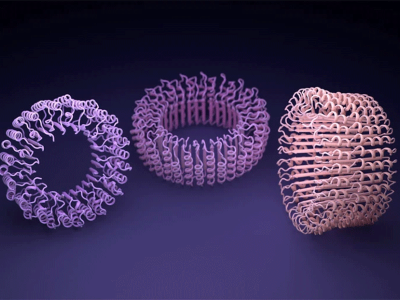
Snake venom can cause paralysis, tissue damage and death.Credit: Ingo Schulz/imageBROKER via Getty
Proteins designed using artificial intelligence (AI) can block the lethal effects of toxins delivered in the venom of cobras, adders and other deadly snakes.
The AI-designed proteins could form the basis of a new generation of therapies for snakebites — which kill an estimated 100,000 people each year and are still treated much as they were a century ago.
The study, published in Nature on 15 January1, is also a demonstration of how machine learning has supercharged the field of computational protein design. Challenges that used to take months or years, or even prove impossible — such as designing a new protein to successfully block another — can now be accomplished in seconds.
Scientists are using AI to dream up revolutionary new proteins
“It’s scary,” says Joseph Jardine, an immunologist at Scripps Research in La Jolla, California. “It’s gone from ‘we couldn’t even do this’ to proof-of-concept work solving actual problems.”
In many parts of the world, snakebites are a prominent killer and cause of permanent disability. The World Health Organization in Geneva, Switzerland, has named snakebite a top-priority neglected tropical disease, alongside others such as dengue and rabies.
Yet treatments have changed little in more than a century — most are based on antibodies in blood serum taken from horses and sheep immunized with snake venom. These antivenoms vary in safety and efficacy and must be administered in a health clinic by trained staff, limiting their usefulness, notes José María Gutiérrez, a toxinologist at the University of Costa Rica Clodomiro Picado Institute in San José.
Triple dose of toxin
Developing snakebite treatments wasn’t on the radar of David Baker, a computational biophysicist at the University of Washington in Seattle, when his laboratory unveiled a game-changing protein-design program called RFdiffusion in late 2022. Inspired by image-generating AI tools such as DALL-E and Midjourney, the program proved adept at designing small proteins that bind strongly to target proteins, including those related to cancer and autoimmune diseases.
Susana Vázquez Torres, a biochemist in Baker’s lab, was interested in tackling neglected diseases and wondered whether RFdiffusion could help to improve snakebite treatments. Snake venoms are composed of various protein toxins that cause paralysis and tissue damage.
AI has dreamt up a blizzard of new proteins. Do any of them actually work?
Vázquez Torres, Baker and their colleagues used RFdiffusion to design ‘mini-binders’ that recognize key regions of three kinds of toxin made by elapid snakes — the family that includes cobras, mambas and adders.
You Might Also Like
The Nature Podcast highlights of 2025
You have full access to this article via your institution. Download the Nature Podcast 24 December 2025In this episode:00:40 What...
Seeding opportunities for Black atmospheric scientists
Vernon Morris (outlined) with alumni from the atmospheric sciences PhD programme he established at Howard University in Washington DC.Credit: Vernon...
peer reviews created using AI can avoid detection
The difficulty of detecting AI-tool use in peer review is proving problematic.Credit: BrianAJackson/iStock via GettyIt’s almost impossible to know whether...
I’ve earned my PhD — what now?
Illustration: David ParkinsThe problemDear Nature,In December 2024, I finished my PhD in biomedical chemistry in Italy, and I now find...












